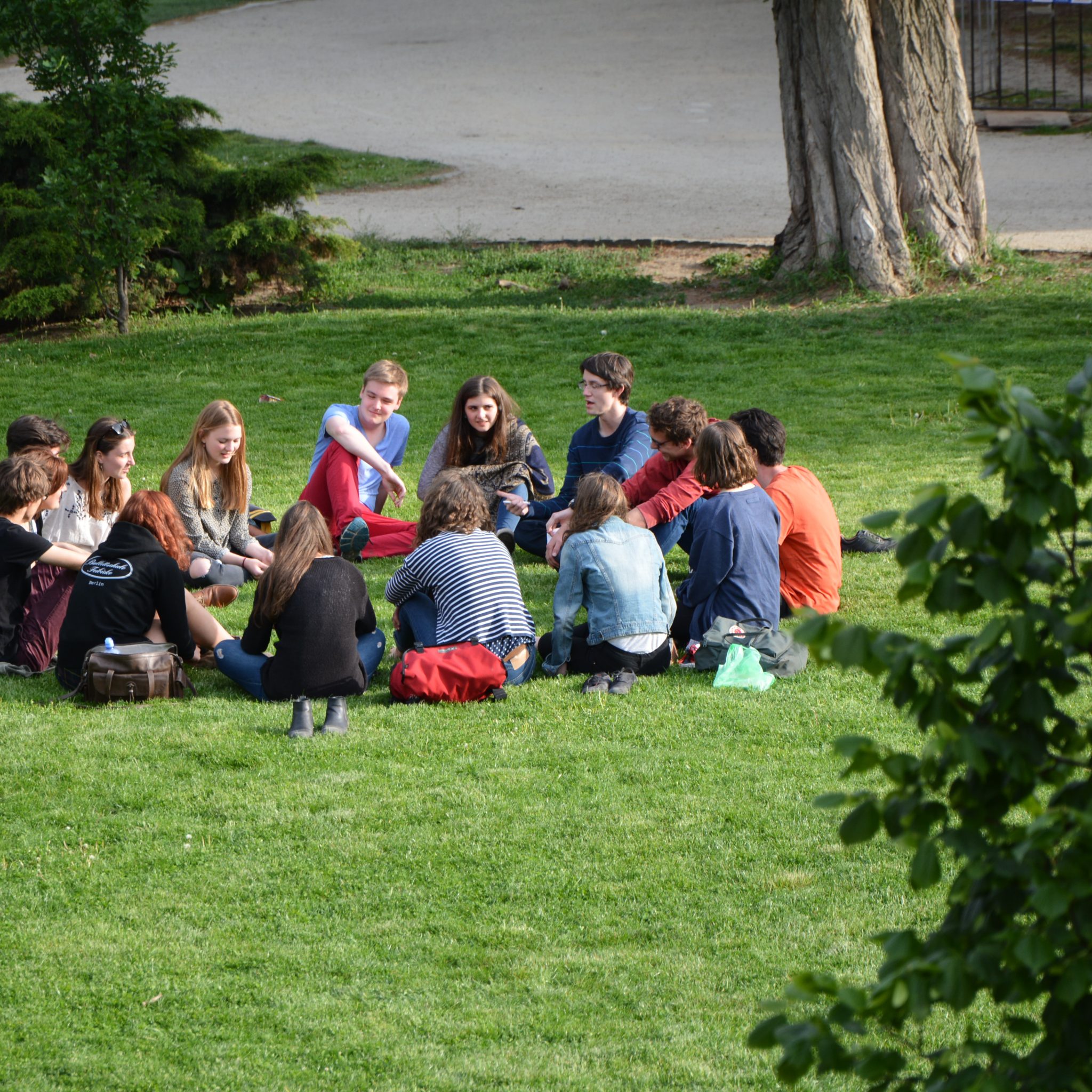
Supporting Student Self-Determination with Restorative Practice | Restorative Pathways

Teens in circle by Beth Macdonald for Unsplash
As educators, we all want the best for our students. We strive to create environments where they not only succeed academically but also grow as individuals. Understanding how to foster this growth means looking at both the methods we use to address behaviour and the theories that explain human motivation. This is where Self-Determination Theory (SDT) and Restorative Practice come into play.
What is self-determination theory?
Self-Determination Theory (SDT), developed by psychologists Edward Deci and Richard Ryan, is a theory about human motivation that suggests people are most motivated and thrive when three basic psychological needs are met: autonomy, relatedness, and competence.
Autonomy: This is the need to feel in control of one’s actions and decisions. It’s about having a sense of agency and choice in what we do.
Relatedness: This is the need to feel connected to others, to belong, and to feel cared for and understood by those around us.
Competence: This is the need to feel effective and capable of achieving things. It’s the sense of accomplishment that comes from overcoming challenges and growing in ability.
When these needs are supported, students (and staff!) feel more motivated, engaged, and satisfied. However, when these needs are thwarted, motivation declines, and wellbeing suffers.
What are restorative practices?
Restorative Practices (RP) are approaches used in schools to build community and respond to conflict and harm in a way that restores relationships rather than punishing individuals. The idea is to shift from traditional punitive discipline (like suspensions or detentions) to approaches that involve dialogue, accountability, and making amends. One of the key components of restorative practices is the restoration of harm – bringing those who have caused harm and those who have been harmed into a conversation to address the wrongdoing, set things right and find a path to healing.
How might restorative practice align with SDT?
Now, let’s explore how restorative practices align with the psychological needs outlined in Self-Determination Theory. By meeting the needs for autonomy, relatedness, and competence, restorative practices offer a powerful alternative to traditional disciplinary methods.
Autonomy: Empowering Students Through Choice
Restorative practices, particularly in the context of addressing harm, provide students with a sense of autonomy. For example, instead of being handed a punishment, a student involved in a conflict might be invited to participate in a restorative circle where they can voice their perspective, express their feelings, and have a say in how to make amends. This approach empowers students by giving them control over their actions and the opportunity to take responsibility for their behaviour in a meaningful way.
In contrast, traditional disciplinary methods often strip students of autonomy. Being sent to detention or suspended from school is a decision made for the student, not with them. This can lead to feelings of powerlessness and disengagement, undermining the very motivation we hope to foster in our students.
Relatedness: Building Connections and Restoring Relationships
One of the core principles of restorative practices is the emphasis on relationships. When harm occurs, the goal is not just to punish but to repair the relationship between those involved. By bringing students, teachers, and even parents into a conversation, restorative practices create a space for empathy, understanding, and connection. This satisfies the need for relatedness – the feeling of being connected and cared for.
For example, a student who has harmed a peer might meet with that peer, facilitated by a teacher, to discuss the impact of their actions. Through this dialogue, both students can share their feelings, listen to one another, and work together to restore the relationship. This process strengthens their sense of connection and belonging in the school community.
Traditional discipline, on the other hand, often isolates students. Sending a student to the office or excluding them from events removes them from the social environment and weakens their sense of connection to their peers and teachers. Instead of fostering understanding and repair, it can create feelings of alienation and resentment.
Competence: Encouraging Growth and Mastery
Restorative practices also support students’ need for competence by encouraging them to engage in problem-solving and reflection. When students participate in restorative processes, they are asked to think critically about their actions, understand the impact of their behaviour, and find ways to make things right. This not only helps them learn from their mistakes but also builds their confidence in handling difficult situations in the future.
For example, after a restorative conversation, a student might take on a project that directly addresses the harm they caused, such as creating a presentation on the importance of kindness or organizing a community service activity. Completing these tasks successfully helps students feel capable and competent, reinforcing their motivation to improve and succeed.
Traditional punitive methods often fail to address the underlying issues and offer little opportunity for personal growth. When students are punished without the chance to understand or repair their mistakes, they miss out on important learning opportunities that contribute to their sense of competence.
The pitfalls of traditional discipline
Traditional disciplinary methods in schools, like suspensions, detentions, and zero-tolerance policies, may seem like quick fixes, but they often fail to meet students’ psychological needs. When students are sanctioned without understanding the reasons behind their behaviour or without the opportunity to repair harm, their needs for autonomy, relatedness, and competence are not met.
This can lead to a cycle of disengagement and misbehaviour. Students who feel disconnected, powerless, and incapable are less likely to be motivated to change their behaviour or engage positively in school. In contrast, restorative practices align with Self-Determination Theory by creating an environment where students’ psychological needs are supported, leading to better outcomes for both students and the school community.
Final words
Aligning Self-Determination Theory with Restorative Practices offers a powerful framework for creating a school environment that not only addresses behaviour but also fosters motivation, engagement, and wellbeing. By focusing on autonomy, relatedness, and competence, restorative practices provide a meaningful alternative to traditional discipline methods, helping students grow and thrive both academically and personally.
As educators, we have the opportunity to rethink how we handle discipline in schools. By embracing restorative practices, we can create a more supportive and motivating environment for our students, ensuring that their psychological needs are met and that they are empowered to succeed.
